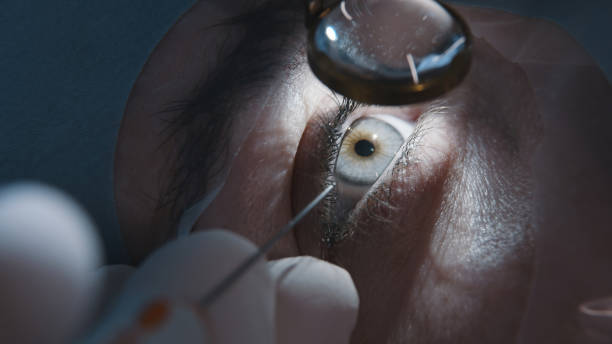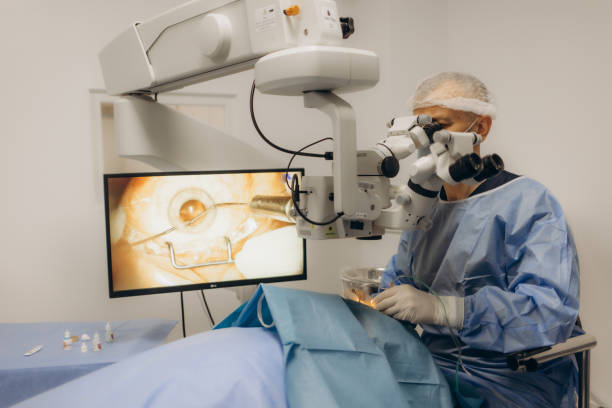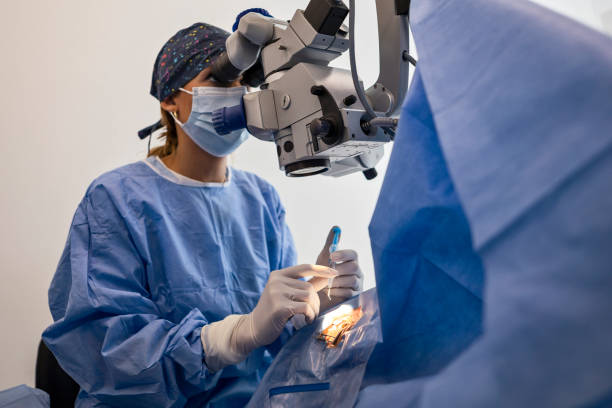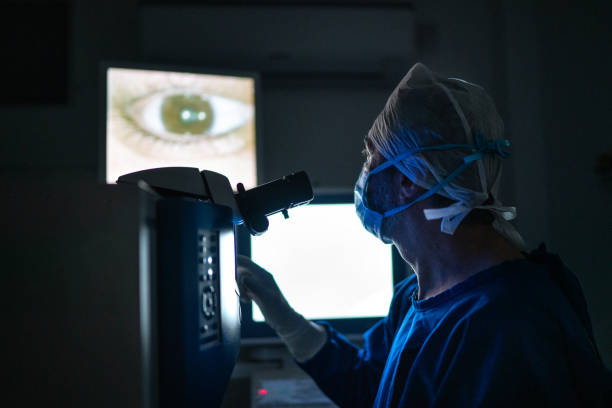Cataracts are a leading cause of vision loss, especially in older adults. The good news is that cataract surgery is a safe and effective way to bring back clear vision. Many people have questions about what the surgery includes, how long recovery takes, and if it’s the right choice for them. This step-by-step guide will explain everything you need to know about cataract surgery—from the procedure itself to what to expect during healing.
What Is Cataract Surgery?
Cataract surgery is a simple and quick procedure that removes the cloudy lens from your eye and replaces it with a clear, artificial lens. This cloudy lens, known as a cataract, forms when proteins in your eye stick together and block light from reaching the retina.
The surgery helps restore clear vision and often reduces the need for thick glasses or contact lenses. Many people notice brighter colors and sharper focus just days after the procedure.
Common Symptoms of Cataracts
Cataracts can develop slowly, but over time, they may cause changes in your vision. You might need cataract surgery if you notice:
- Blurry or foggy vision
- Difficulty seeing clearly at night
- Sensitivity to bright lights or glare
- Seeing halos around lights
- Colors that look faded or yellow
- Double vision in one eye
These symptoms can make everyday tasks—like reading, driving, or watching TV—hard to do. If you notice any of these changes, it may be time to talk to your eye doctor. can make daily activities like reading, driving, or watching TV very difficult.

When Should You Consider Cataract Surgery?
Cataract surgery is usually recommended when the cataracts start to interfere with your everyday life. You may not need treatment right away, but if your vision keeps getting worse and glasses or contacts no longer help, it could be time to consider surgery.
An eye doctor can do a full eye exam to check your vision and see if cataracts are the cause of your problems. The doctor will also help you decide if surgery is the right choice based on your symptoms and lifestyle needs.
How Cataract Surgery Works
Cataract surgery is most often done in an outpatient clinic, so you won’t need to stay overnight. The procedure is quick and usually takes about 15 to 30 minutes for each eye. During the surgery, the cloudy lens is removed and replaced with a clear, artificial lens to help you see better. Most people are awake during the procedure but receive medicine to stay relaxed and comfortable.
Step-by-Step Overview
Here’s what you can expect during cataract surgery:
- Numbing the Eye: Special eye drops are used to numb the eye. You may also get medicine to help you stay calm and relaxed.
- Making a Small Cut: The surgeon makes a tiny cut in the eye using a precise surgical tool.
- Removing the Cataract: A small device uses gentle ultrasound waves to break up the cloudy lens. The pieces are then carefully removed through suction.
- Inserting the New Lens: A clear artificial lens, called an intraocular lens (IOL), is placed in the same spot as your natural lens.
The procedure is painless, and in most cases, no stitches are needed. You’ll be able to go home shortly after the surgery.
Types of Intraocular Lenses (IOLs)
There are several types of intraocular lenses (IOLs) to choose from after cataract surgery. Each type has its own benefits. Some help you see better at all distances, while others are made for near or far vision. Your eye doctor will explain the options and help you pick the one that best fits your vision needs and daily activities.
Popular Options Include:
- Monofocal IOLs: These lenses provide clear vision at one set distance, usually far. You may still need reading glasses for close-up tasks.
- Multifocal IOLs: These lenses are designed to help you see clearly at both near and far distances, often reducing the need for glasses.
- Toric IOLs: Ideal for people with astigmatism, toric lenses correct the shape of the cornea for sharper, clearer vision.
- Light Adjustable Lenses: These special lenses can be adjusted after surgery using light treatments, giving you more control over your final vision results.
Each lens type has pros and cons. Your eye doctor will help you choose the best one based on your lifestyle, vision goals, and daily activities.
Benefits of Cataract Surgery
Cataract surgery is one of the safest and most successful procedures in modern medicine. It has a high success rate and is performed millions of times each year. According to the American Academy of Ophthalmology, over 90% of people who have cataract surgery enjoy clearer, sharper vision afterward (source).
Most people notice big improvements in their ability to read, drive, and enjoy daily activities again.
Key Benefits:
- Clearer, sharper vision
- Brighter and more vivid colors
- Less glare from sunlight or headlights
- Easier to see at night
- More freedom to enjoy daily activities
- A boost in overall quality of life
Many people say it feels like a fog has been lifted, making everything look crisp and full of color again.
What to Expect During Recovery
Recovery after cataract surgery is usually fast and smooth. Many people start to see better just a few days after the procedure. However, full healing can take about 4 to 6 weeks. During this time, your doctor may give you eye drops and ask you to avoid heavy lifting or rubbing your eyes. Following your post-surgery instructions will help your eyes heal properly and keep your vision clear.
Post-Surgery Tips:
- Don’t rub or press on your eye
- Wear dark, protective sunglasses when outside
- Use your prescribed eye drops exactly as directed to prevent infection
- Avoid heavy lifting, bending over, or strenuous activity for a few weeks
- Go to all your follow-up visits to check your healing progress
It’s normal to feel mild discomfort, dryness, or itchiness during the first few days. But if you have strong pain, vision loss, or swelling, contact your eye doctor right away.

Who Should Not Get Cataract Surgery?
Cataract surgery is safe for most people, but in rare cases, it may not be the best option. You may not be a good candidate if you have:
- Severe or ongoing eye infections
- Advanced glaucoma that is hard to control
- Very poor overall eye health
- Medical conditions that could slow healing, like uncontrolled diabetes
Your ophthalmologist will do a full eye exam and review your medical history to decide if surgery is right for you.
How to Prepare for Cataract Surgery
Getting ready for cataract surgery is simple and stress-free when you know what to do. Here’s how to prepare:
Before Surgery:
- Have a complete eye exam to check your overall eye health
- Talk to your doctor about the best intraocular lens (IOL) for your lifestyle
- Stop certain medications if your doctor tells you to
- Arrange for someone to drive you home after surgery
The Day of Surgery:
- Wear clean, comfortable clothing
- Avoid makeup, lotions, perfumes, or aftershave
- Follow all pre-surgery instructions from your eye doctor
Being well-prepared helps everything go smoothly and supports a quicker, easier recovery.
Cataract Surgery Cost and Insurance
The cost of cataract surgery varies depending on where you live, the type of IOL you choose, and your insurance coverage.
What’s Typically Covered:
- Medicare and most private insurers cover standard cataract surgery with a monofocal lens.
- Premium IOLs (like multifocal or toric) often cost extra.
Talk to your provider to understand your benefits and any out-of-pocket expenses.
Choosing the Right Surgeon
Finding the right eye surgeon is one of the most important steps for a smooth surgery and great results. A skilled and caring doctor can make all the difference.
Look for a Surgeon Who:
- Specializes in cataract surgery and has years of experience
- Has positive reviews and happy patients
- Takes time to explain your choices and answer questions
- Uses the latest tools and offers a variety of lens options
Always feel free to ask questions. If you’re unsure, getting a second opinion can help you feel more confident in your decision.

FAQs About Cataract Surgery
Q: Is cataract surgery painful?
A: No. Your eye will be numbed with drops, and you may be given a sedative to help you relax.
Q: How long is the recovery?
A: Most people see improvement in a few days, with full recovery in 4 to 6 weeks.
Q: Will I still need glasses after surgery?
A: It depends on the type of IOL you choose. Some people still need glasses for reading or close-up work.
Q: Can cataracts come back?
A: No. Once the lens is removed, cataracts can’t return. However, a cloudy membrane (called PCO) can develop and may be treated with a quick laser procedure.
Take the Next Step Toward Clearer Vision
Cataract surgery is a safe and trusted way to restore clear vision. Thanks to modern tools and expert doctors, you can enjoy sharper sight and brighter colors again—often in just a few days.
Don’t put it off—schedule a full eye exam today to find out if cataract surgery is the right choice for you. Your eyesight matters, and taking action now can lead to a better quality of life.
For more helpful information, visit trusted sources like the National Eye Institute and the American Academy of Ophthalmology.

